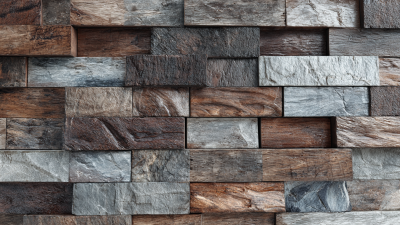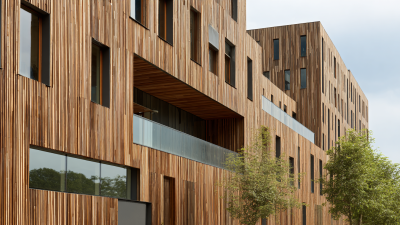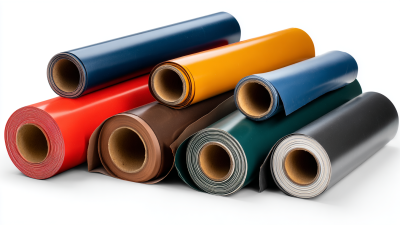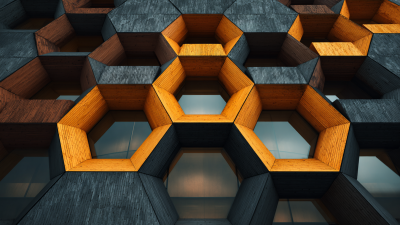In recent years, the significance of Wall Cladding as a transformative solution for both residential and commercial spaces has gained immense recognition. According to a report by ResearchAndMarkets, the global wall cladding market is projected to reach USD 274.9 billion by 2026, growing at a CAGR of 5.9% from 2021. This surge in demand is driven by the growing emphasis on aesthetics, energy efficiency, and sustainability in building materials. Wall cladding not only enhances the visual appeal of a structure but also provides essential benefits such as weather resistance, thermal insulation, and soundproofing. As architects and designers increasingly seek innovative solutions that meet both functional and aesthetic needs, exploring the latest advancements in wall cladding technology becomes crucial. With an array of materials and styles available, this guide will navigate through the myriad of options, helping you reimagine your space efficiently and stylishly.
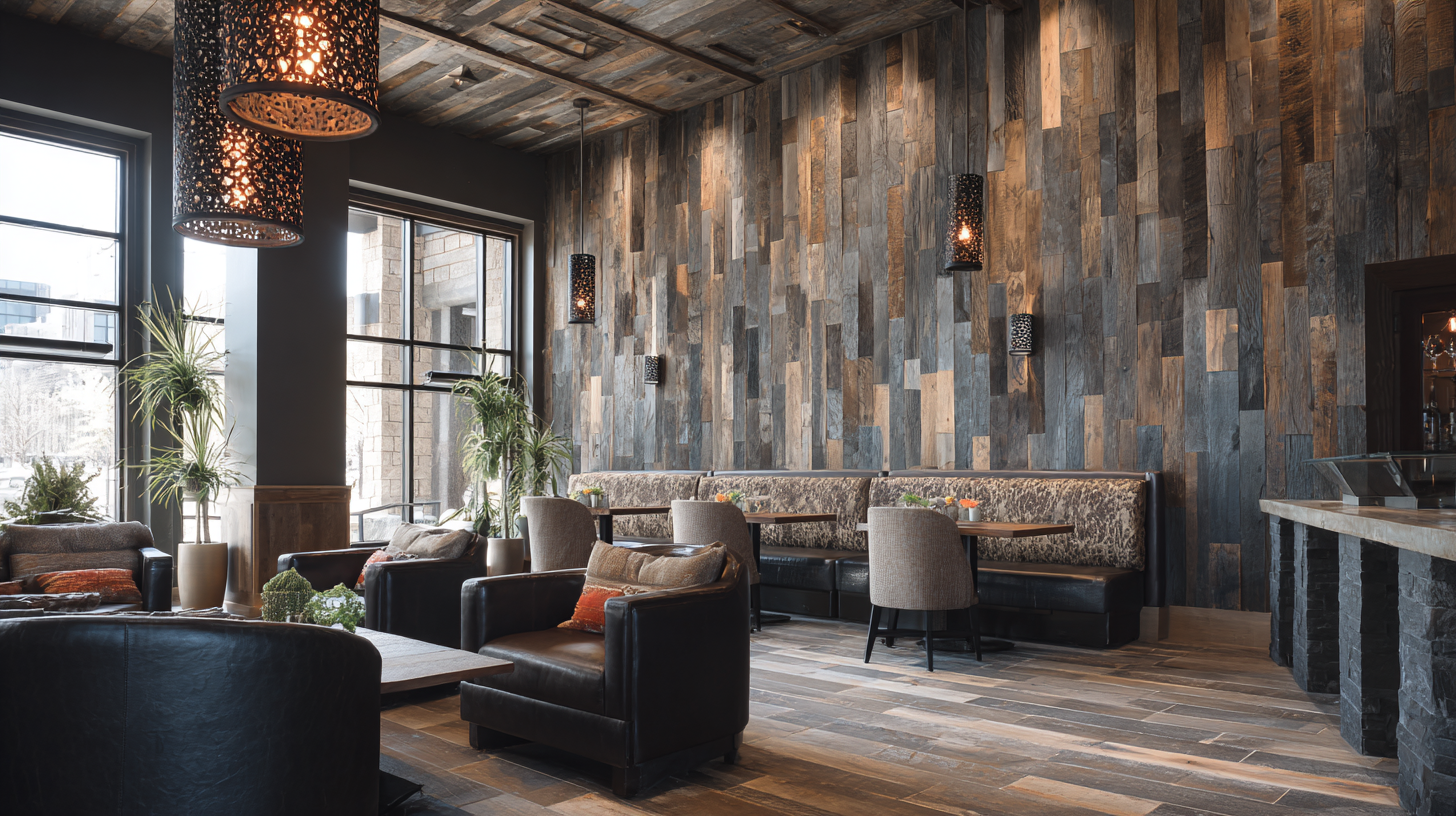
Wall cladding is a versatile architectural solution that enhances the aesthetic and functional aspects of any space. Essentially, wall cladding refers to the application of one material over another to provide a protective layer and improve the visual appeal of structures, both indoors and outdoors. This technique not only safeguards walls from weather elements, moisture, and decay but also serves as an effective insulator, contributing to energy efficiency.
The benefits of wall cladding extend beyond mere protection. With a wide variety of materials available—including wood, stone, metal, and vinyl—homeowners can choose finishes that align with their design vision and lifestyle. Innovative cladding solutions also offer sound insulation, which can significantly improve indoor acoustics. Furthermore, wall cladding can enhance a property's market value, making it a smart investment for those looking to upgrade their spaces. The fusion of functionality and aesthetics makes wall cladding an ideal choice for both residential and commercial environments, transforming ordinary walls into striking focal points.
Innovative wall cladding solutions are reshaping interior and exterior spaces, offering not only aesthetic appeal but also functional benefits. With the wall cladding market valued at approximately $3.11 billion in 2023, expected to grow to $3.25 billion in 2024 and reach $4.71 billion by 2032, the industry is rapidly evolving with a compound annual growth rate of 4.72% from 2024 to 2032. Various types of materials, such as PVC, MDF, and sustainable options, cater to diverse applications ranging from residential homes to commercial establishments.
Furthermore, initiatives like the "All-age Enjoyable Home" in the Xian'an community exemplify how innovative wall cladding can transform traditional spaces into modern hubs that engage the community. Emphasizing technology, aesthetic value, and local culture, these materials not only enhance the visual appeal of spaces but also promote sustainable living solutions. As more architects and designers embrace these materials, we can anticipate a continued push towards enhancing both functionality and design in our environments.
When considering wall cladding solutions, design choices must be tailored to the specific environment. Whether it’s a residential space, commercial setting, or outdoor area, the material choices can significantly influence aesthetics and functionality. According to a recent report by Statista, the global wall cladding market is projected to surpass $50 billion by 2027, underlining the growing importance of selecting the right materials for diverse applications.
Residential areas benefit greatly from natural wood or stone veneers, which can enhance warmth and invite comfort. Conversely, in commercial spaces, materials like metal or composite panels are often preferred for their durability and modern appeal. A study by MarketsandMarkets found that demand for sustainable materials is on the rise, with 40% of architects prioritizing eco-friendly options in their projects. This trend is not only environmentally responsible but also meets consumer preferences for green building practices. Understanding the environment’s unique needs is crucial in selecting wall cladding that not only looks great but also stands the test of time.
 When it comes to installing innovative wall cladding, achieving a flawless finish requires careful planning and execution. Start by ensuring your surface is properly prepared; this includes cleaning and leveling the walls to create the perfect foundation for your cladding. A clean and even surface not only helps in the adhesion of the cladding but also gives the best polished look once the project is complete.
When it comes to installing innovative wall cladding, achieving a flawless finish requires careful planning and execution. Start by ensuring your surface is properly prepared; this includes cleaning and leveling the walls to create the perfect foundation for your cladding. A clean and even surface not only helps in the adhesion of the cladding but also gives the best polished look once the project is complete.
Tips for a successful installation include measuring twice and cutting once. Accurate measurements can prevent costly mistakes and wasted materials. Additionally, using high-quality adhesive and tools designed specifically for wall cladding can make a significant difference in the ease of installation and the results. Don’t rush the process; take your time with alignment and securing the panels, as precision during this stage will lead to a more professional appearance.
Another key tip is to consider the use of a vapor barrier. Installing a vapor barrier behind your cladding can protect your walls from moisture buildup, enhancing durability and extending the lifespan of your cladding. Remember to leave gaps for expansion, especially if you are working with wood or composite materials, as they may expand or contract with changes in humidity and temperature. These strategies will help ensure your wall cladding transformation is not only beautiful but also practical and long-lasting.
When investing in wall cladding, maintaining its beauty and durability is crucial for achieving long-term satisfaction. A report by the Wall and Ceiling Alliance indicates that properly maintained wall cladding can extend its lifespan by 15-20 years, significantly exceeding the average lifespan of untreated surfaces. To ensure your wall cladding remains aesthetically pleasing and functional, implement these best practices.

One essential tip is to perform regular inspections, ideally bi-annually, to check for signs of wear, damage, or moisture accumulation. Early detection of issues can prevent costly repairs later. Additionally, it's recommended to clean your wall cladding using a gentle cleanser and a soft brush to avoid scratches and maintain its appearance. For wooden cladding, a sealant should be reapplied every few years to protect against the elements and reduce the risk of rot.
Furthermore, consider the environmental conditions impacting your cladding. For instance, regions with high humidity may require more frequent maintenance due to the increased risk of mold and mildew. According to a study by the National Association of Home Builders, homes with innovative wall cladding solutions can save up to 30% on overall maintenance costs. Prioritizing proper care and maintenance can ensure that your wall cladding remains a beautiful asset to your space for years to come.
